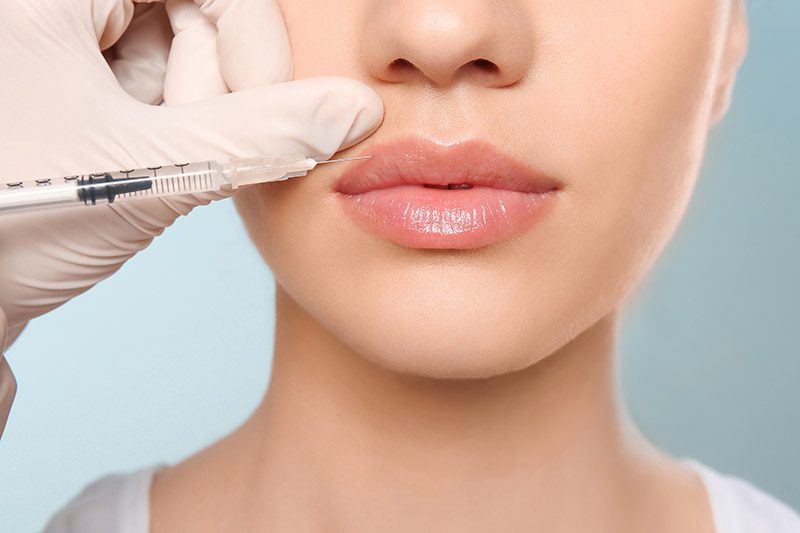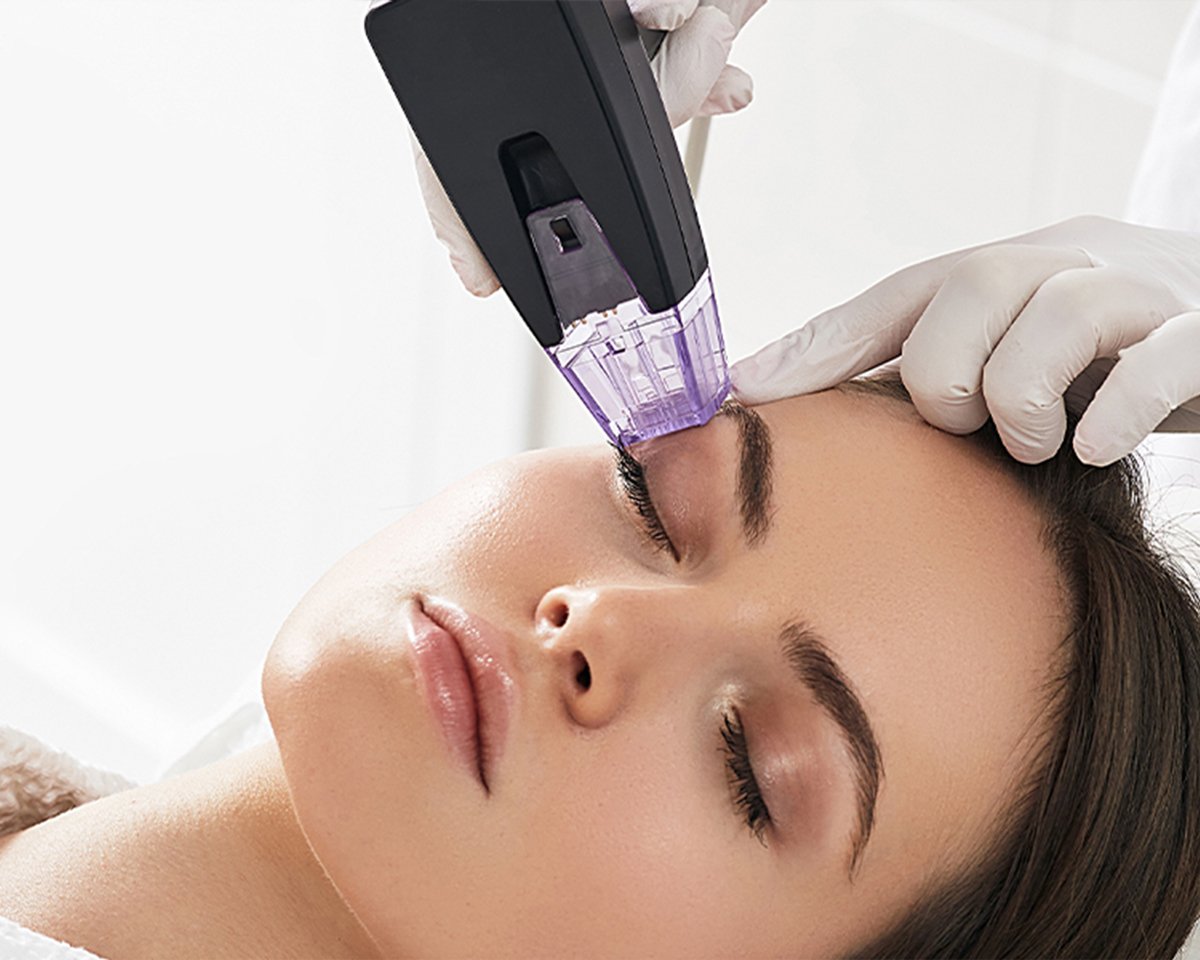
Best PRP for hair in Dubai, prp hair PRP Hair restoration. Hair loss treatment PRP Hair restoration Hair loss treatment. Platelet-rich plasma for hair, PRP therapy for hair loss, PRP injections for hair growth, PRP hair restoration. Best PRP for hair Platelet-rich plasma for hair growth in Dubai. Hair loss treatment in Dubai. thinning hair Dubai. hair restoration Dubai. Best PRP for hair in Dubai PRP injections for hair loss, PRP hair regrowth. Best PRP treatment for hair. Hair rejuvenation with PRP prp hair treatment prp hair before and after PRP hair before and after pictures. Platelet-rich plasma hair results. Before and after PRP hair treatment, PRP hair growth transformation. Platelet-rich plasma for hair before and after, PRP hair rejuvenation outcomes, PRP hair restoration progress. prp hair treatment dubai, PRP hair treatment in Dubai. Platelet-rich plasma for hair Dubai. Dubai PRP hair rejuvenation. Dubai PRP hair restoration. Dubai’s top PRP for hair loss
Table of Contents
What is PRP Hair?
Platelet-Rich Plasma (PRP) treatment involves injecting your blood plasma, which is enriched with platelets, into the scalp to stimulate the creation of new hair follicles. These injections activate natural hair growth and sustain it by enhancing blood supply to the hair follicles and promoting an increase in the thickness of the hair shaft.
PRP Hair Restoration treatment in Dubai
Blood Plasma Enriched with Platelets: PRP is derived from the patient’s own blood. A small amount of blood is drawn, typically from the arm, and then processed to separate the platelet-rich plasma from other blood components.
Injection into the Scalp: The concentrated PRP, which is rich in growth factors and other bioactive substances, is then injected into the scalp. This is often done in areas where hair loss or thinning is evident.
Stimulation of New Hair Follicles: PRP injections are believed to stimulate the growth of new hair follicles. The growth factors in the PRP promote cell proliferation and differentiation, potentially leading to the creation of new hair follicles.
Natural Hair Growth: PRP injections work by triggering the body’s natural healing processes. The growth factors present in the PRP encourage the activation of dormant hair follicles, leading to natural hair growth.
Increased Blood Supply: PRP helps increase blood supply to the hair follicles. Improved blood circulation can provide essential nutrients and oxygen to the follicles, promoting healthier hair growth.
Thickening of Hair Shaft: PRP is thought to increase the thickness of the hair shaft. This can contribute to a fuller and denser appearance of the hair, addressing concerns related to thinning or fine hair.
PRP Hair loss treatment in Dubai
It’s important to note that while PRP treatment for hair has gained popularity and shown promising results for some individuals, its efficacy can vary among different people. Additionally, multiple sessions may be needed for optimal results. Consulting with a qualified healthcare professional is crucial to assess whether PRP treatment is suitable for an individual’s specific hair loss condition and to discuss potential outcomes and expectations.
What Are the Stages of Hair Growth?

- Anagen (Growing Phase):
- Duration: 3 to 5 years (varies by hair type)
- Characteristics: This is the longest phase where hair follicles actively produce hair. About 90% of the hairs on the head are typically in the anagen phase at any given time.
- Growth: Hairs continue to grow until they are cut or reach the end of their natural lifespan.
- Catagen (Transition Phase):
- Duration: About 10 days
- Characteristics: This phase follows the anagen phase and is a transitional stage. Hair follicles shrink, and hair growth slows. The hair separates from the bottom of the follicle but remains in place during its final days of growth. Approximately 5% of head hairs are in the catagen phase at any given time.
- Telogen (Resting Phase):
- Duration: Approximately 3 months
- Characteristics: Hairs in this phase do not grow, but they do not usually fall out either. About 10 to 15% of scalp hairs are in the telogen phase. This is also the phase when new hairs start to form in follicles that have just released hairs during the catagen phase.
- Exogen (Shedding Phase):
- Duration: About 2 to 5 months (extension of the telogen phase)
- Characteristics: An extension of the telogen stage, during the exogen phase, hair sheds from the scalp, often assisted by washing and brushing. Losing 50 to 100 hairs per day during this phase is considered normal. New hairs are simultaneously growing in the follicles as old hairs fall away.
Hair loss PRP treatment Dubai
Understanding these phases is crucial for comprehending the hair growth cycle and potential factors affecting hair health. Various factors, including age, nutrition, and overall health, can influence the duration of each phase. By adopting healthy habits, individuals can support a more robust and balanced hair growth cycle.
prp hair treatment dubai PRP hair treatment in Dubai. Platelet-rich plasma for hair Dubai. Dubai PRP hair rejuvenation. Dubai PRP hair restoration. Dubai’s top PRP for hair loss
How to maintain hair health during all four stages?

Maintaining hair health throughout all four stages of the hair growth cycle involves a combination of factors, including good nutrition, stress management, and proper hair care. Here’s a summary of the key strategies:
Good Nutrition:
- Focus on healthy proteins such as lean meats, fish, beans, legumes, and low-fat dairy products, as hair is primarily made of protein.
- Ensure sufficient intake of essential nutrients associated with healthy hair growth, including Vitamin D, Vitamin C, iron (especially in women), zinc, folic acid, and Vitamin B12.
Reduced Stress:
- High-stress levels can contribute to various premature hair loss conditions. Techniques to manage stress include yoga, meditation, breathing exercises, counseling, and avoiding unnecessary stressors.
Proper Hair Care:
- Choose the right shampoo for your hair type (oily, dry, fine, color-treated, etc.).
- Experiment with different conditioners to find the one that suits your hair best.
- Treat your hair gently by avoiding very hot water during shampooing, gently towel-drying your hair, and using lower heat settings when blow-drying.
- Pay attention to how your hair responds to different products and adjust your hair care routine accordingly.
prp hair before and after
Key Takeaways:
- The four phases of hair growth (anagen, catagen, telogen, and exogen) have varying durations.
- Adopting a healthy lifestyle that includes low stress, a proper diet, and gentle hair care practices can contribute to healthy hair growth for an extended period.
- If you notice accelerated hair loss or changes in your hair growth pattern, consult with a doctor to rule out any underlying conditions disrupting the hair growth cycle. Prompt treatment may help slow hair loss and preserve the health of your remaining hair.
Remember that individual responses to these strategies may vary, and it’s advisable to seek personalized advice from healthcare professionals, particularly if you have specific concerns about hair health or hair loss.
What is hair loss?
Hair loss, medically known as alopecia, can impact either the scalp or the entire body, presenting as a temporary or permanent condition. Its causes may include hereditary factors, hormonal changes, certain medical conditions, or be a natural part of the aging process. While hair loss can affect anyone, it is more prevalent in men.
Alternative Names:
Loss of hair; Alopecia; Baldness; Scarring alopecia; Non-scarring alopecia
The term “baldness” commonly refers to significant hair loss on the scalp, often attributed to hereditary factors and aging. Some individuals choose to embrace their natural hair loss progression without intervention, while others may employ various strategies such as specific hairstyles, makeup, hats, or scarves to conceal it. Additionally, there are treatment options available for those who wish to prevent further hair loss or promote hair regrowth.
Hair Loss Causes
Hair loss usually progresses gradually. It can manifest as patchy areas or occur uniformly across the entire scalp (diffuse). On average, individuals naturally shed approximately 100 hairs from their head each day. The scalp is home to around 100,000 hairs.
It is recommended to consult with a healthcare professional before pursuing any hair loss treatment. Discussing the underlying cause of your hair loss and exploring available treatment options with your doctor will help determine the most appropriate course of action for your individual situation.
Signs and symptoms of hair loss may include:
prp hair treatment dubai PRP hair treatment in Dubai. Platelet-rich plasma for hair Dubai. Dubai PRP hair rejuvenation. Dubai PRP hair restoration. Dubai’s top PRP for hair loss
Gradual Thinning on Top of the Head:
- Common Type: This is the most prevalent type of hair loss, often associated with aging.
- In Men: Hair typically recedes at the hairline on the forehead.
- In Women: Broadening of the part in the hair is common. Frontal fibrosing alopecia, characterized by a receding hairline, is increasingly observed in older women.
Circular or Patchy Bald Spots:
- Location: Hair loss occurs in circular or patchy spots on the scalp, beard, or eyebrows.
- Symptoms: Itchy or painful skin may precede hair loss in affected areas.
Sudden Loosening of Hair:
- Trigger: Can be caused by a physical or emotional shock.
- Symptoms: Handfuls of hair may come out during activities like combing, washing, or gentle tugging.
- Outcome: This type of hair loss usually leads to overall thinning but is typically temporary.
prp hair treatment dubai
Full-Body Hair Loss:
- Causes: Certain medical conditions and treatments, such as chemotherapy for cancer, can lead to the loss of hair all over the body.
- Recovery: In many cases, the hair usually grows back after the treatment.
Patches of Scaling on the Scalp:
- Sign of Ringworm: Scaling patches that spread over the scalp may indicate ringworm.
- Additional Symptoms: Broken hair, redness, swelling, and oozing may accompany the scaling.
It’s important to note that these signs and symptoms can vary depending on the underlying cause of the hair loss. Seeking medical advice from a dermatologist or healthcare professional is crucial for an accurate diagnosis and appropriate treatment. Early intervention can be key to addressing the specific cause and potentially preventing further hair loss.

prp hair treatment dubai PRP hair treatment in Dubai. Platelet-rich plasma for hair Dubai. Dubai PRP hair rejuvenation. Dubai PRP hair restoration. Dubai’s top PRP for hair loss
Hair Loss Causes
Heredity: Both men and women experience a gradual reduction in hair thickness and quantity as they age. This type of baldness, linked to aging, heredity, and testosterone hormone changes, is typically not associated with any disease. Pattern baldness, inherited from family members, affects more men than women. It can manifest at any time after puberty, with approximately 80% of men showing signs of male pattern baldness by the age of 70.
Physical or Emotional Stress: Physical or emotional stress can lead to a shedding of one-half to three-quarters of scalp hair, known as telogen effluvium. During this type of hair loss, hair tends to fall out in noticeable amounts during activities like shampooing, combing, or simply running hands through the hair. The shedding may become apparent weeks to months after the stressful episode, and while it is usually temporary, it can persist and become chronic. Causes of telogen effluvium include high fever, severe infection, childbirth, major surgery, major illness, sudden blood loss, severe emotional stress, crash diets lacking sufficient protein, and certain medications.
Hair Loss treatment
Other Causes: Hair loss in unusual patterns may be attributed to various factors, such as:
- Alopecia areata: bald patches on the scalp, beard, eyebrows, or eyelashes.
- Anemia
- Autoimmune conditions like lupus
- Burns
- Certain infectious diseases like syphilis
- Excessive shampooing and blow-drying
- Hormone changes
- Thyroid diseases
- Nervous habits like continual hair pulling or scalp rubbing (Trichotillomania)
- Radiation therapy
- Tinea capitis (ringworm of the scalp)
- Tumor of the ovary or adrenal glands
- Hair styles causing excessive tension on the hair follicles
- Bacterial infections of the scalp
- Primary scarring alopecia
- Nonscarring alopecias
- Androgenetic Alopecia, Alopecia Areata, Telogen Effluvium, Anagen Effluvium, Traction Alopecia, Trichotillomania, and Alopecia Syphilitica.
It’s important to note that hair loss can have multiple causes, and a healthcare professional can provide a thorough evaluation for an accurate diagnosis.
Diagnosing hair loss:
Diagnosing hair loss involves a thorough evaluation by a physician to identify the specific type of hair loss and its underlying causes. The diagnostic process typically includes:
Detailed Medical History: Gathering information about the patient’s medical history is crucial. This includes details about any existing medical conditions, previous illnesses, medications taken, and any known allergies.
Family History: Understanding the family history of hair loss is important, as certain types of alopecia can have a genetic component. Information about the occurrence of hair loss in close relatives can provide valuable insights.
History of Illnesses: Identifying any history of illnesses or medical conditions that may contribute to hair loss is essential. Conditions such as autoimmune disorders, thyroid issues, and hormonal imbalances can be relevant.
Medications: A review of the medications the individual is currently taking or has taken in the past is essential. Certain medications can be associated with hair loss as a side effect.
Hair Care Routine: Understanding the individual’s hair care practices, including the use of specific products, styling techniques, and any recent changes in hair care routine, can provide clues about potential contributing factors.
prp for hair dubai
In addition to the patient’s history, your physician may conduct a physical examination of the scalp and hair. This examination may include:
- Scalp Analysis: Close examination of the scalp for signs of inflammation, scaling, or other abnormalities.
- Pull Test: Gently tugging on a few hairs to assess the number of hairs that come out, which can help determine the stage of the hair growth cycle.
- Blood Tests: Included but not limited to Complete Blood Count (CBC), Ferritin, Serum Iron and Total Iron-Binding Capacity (TIBC), Thyroid Function Tests (TSH, T3, and T4), Vitamin D, Vitamin B12, and Zinc levels, Hormone Levels (Hormone panels, including DHEA-S, testosterone, and estrogen levels), C-reactive Protein (CRP), Antinuclear Antibody (ANA) Test.
- Biopsy: In some cases, a small skin sample (biopsy) may be taken for further analysis to determine the cause of hair loss.
The combination of a detailed history and physical examination allows the dermatologist to formulate a comprehensive diagnosis and recommend an appropriate treatment plan. It’s important for individuals experiencing hair loss to seek professional medical advice for accurate diagnosis and personalized care.
What is PRP?
PRP is a three-step procedure that involves extracting blood from your arm, processing it through a machine to isolate the platelets from the rest of the blood, and finally reintroducing the platelet-rich portion back into your body through injection.
A PRP hair restoration treatment is a holistic cosmetic procedure that entails the injection of platelet-rich plasma (PRP) into the face. PRP, derived from blood, contains growth factors and proteins that facilitate cellular healing. When introduced into the scalp, PRP can stimulate the hair follicles to produce more healthy hair. It can help with the hair texture and hair tickness.
In addition to its cosmetic applications, PRP proves to be an effective remedy for facial treatments. Furthermore, it finds utility in sports medicine for treating injuries. The versatile nature of PRP highlights its potential to promote healing and rejuvenation across various medical and aesthetic fields.
How does PRP work?
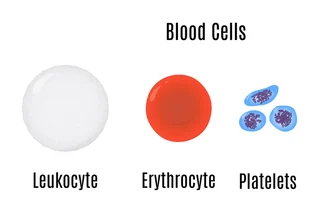 Our blood comprises plasma, red blood cells, white blood cells, and platelets, with platelets playing a crucial role in blood clotting and the production of growth factor proteins essential for healing. PRP hair restoration treatment harnesses the healing properties of platelets from your blood to promote hair growth. The growth factors derived from platelets are vital for hair follicles.
Our blood comprises plasma, red blood cells, white blood cells, and platelets, with platelets playing a crucial role in blood clotting and the production of growth factor proteins essential for healing. PRP hair restoration treatment harnesses the healing properties of platelets from your blood to promote hair growth. The growth factors derived from platelets are vital for hair follicles.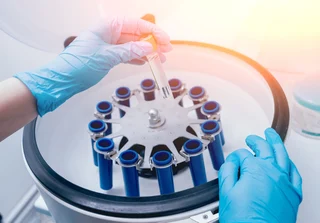
To initiate the process, a medical professional will draw a small vial of blood, and place it in a centrifuge to separate the platelet-rich plasma (PRP) from the red and white blood cells. This centrifugal process concentrates the platelets, significantly elevating their count, and yielding impressive results. Subsequently, the PRP solution is ready to address various hair concerns.
prp hair treatment dubai PRP hair treatment in Dubai. Platelet-rich plasma for hair Dubai. Dubai PRP hair rejuvenation. Dubai PRP hair restoration. Dubai’s top PRP for hair loss
What is PRP treatment used for?
PRP, or Platelet-Rich Plasma, is a medical treatment that utilizes a patient’s own blood to stimulate healing and regeneration in various tissues. The treatment involves extracting a small amount of the patient’s blood, processing it to concentrate the platelets, and then injecting the PRP into the targeted area. Here are some of the common uses of PRP treatment:
PRP Hair Treatment: PRP injections into the scalp are often used to promote hair growth and prevent hair loss. This treatment is particularly recommended for conditions like androgenic alopecia, which is a common form of hair loss in both men and women.
PRP Facial Treatment: PRP injections on the face are utilized for various cosmetic purposes. This includes treating wrinkles and fine lines, addressing acne scars, improving skin texture, reducing dark circles, and even addressing stretch marks. The growth factors in PRP stimulate collagen production and enhance tissue regeneration, contributing to a more youthful appearance.
Acute Injuries: PRP injections are applied to treat acute injuries, especially in orthopedics. This includes injuries like knee sprains, muscle strains, and other soft tissue injuries. The growth factors in PRP can aid in the healing process and promote tissue repair.
PRP Treatment for Skin: PRP is employed for skin rejuvenation and addressing various skin conditions. The regenerative properties of PRP make it effective in treating skin ulcers, hyperpigmentation issues, and signs of burns. It can enhance the natural healing process and improve the overall health and appearance of the skin.
Best PRP hair clinic in Dubai
It’s important to note that while PRP has shown promising results in various applications, the effectiveness of the treatment may vary from person to person, and more research is needed to fully understand its potential benefits and limitations. Additionally, it’s crucial to consult with a qualified medical professional before undergoing any PRP treatment to ensure it is appropriate for your specific condition.
What can PRP do for hair loss?
Platelets are one of the four primary components of blood, along with red blood cells, white blood cells, and plasma. Platelets play a crucial role in promoting cell growth and regeneration.
In PRP, platelets are concentrated at a level about five times higher than in regular blood. This concentration is achieved by processing a small amount of the patient’s blood. The resulting PRP is a plasma with an increased number of platelets.
Platelets are rich in growth factors, which are bioactive proteins that play a key role in various physiological processes, including wound healing and tissue regrowth.
Platelet-rich plasma for hair
In the context of hair loss, the mechanism behind PRP treatment is that when platelets are injected deep into the scalp to reach the base of the hair follicle, they may stimulate dermal papilla cells. Dermal papilla cells are specialized cells critical for hair growth.
The growth factors released by platelets could promote the activation of dormant hair follicles, stimulate cell proliferation, and contribute to hair regrowth. This is particularly relevant for individuals experiencing conditions like androgenic alopecia.
It’s important to note that while PRP treatment for hair loss has gained popularity and shown promising results for some individuals, the scientific understanding of its mechanisms and the variability in treatment outcomes are areas that continue to be researched. As with any medical procedure, individuals considering PRP treatment for hair loss should consult with qualified healthcare professionals to determine its appropriateness for their specific condition and discuss potential outcomes and expectations.
prp hair treatment dubai PRP hair treatment in Dubai. Platelet-rich plasma for hair Dubai. Dubai PRP hair rejuvenation. Dubai PRP hair restoration. Dubai’s top PRP for hair loss
Are you a good candidate for PRP Hair?
PRP (Platelet-Rich Plasma) hair treatment is generally considered suitable for individuals experiencing hair loss or thinning, both men and women. However, the effectiveness of PRP can vary from person to person, and it is often considered more beneficial for those in the early stages of hair loss or thinning.
A personalized approach to care is emphasized, and a consultation with an experienced doctor is a crucial first step. During this consultation:
PRP injections for hair growth.
Assessment of Individual Needs: The dermatologist will assess your specific hair loss concerns and needs. This includes evaluating the pattern and extent of hair loss.
Medical History Review: Your medical history will be reviewed to identify any underlying health conditions or factors that may contribute to hair loss.
Determining Suitability: Based on the assessment and medical history, the dermatologist will determine whether PRP therapy is a suitable option for you. Factors such as the cause and extent of hair loss, overall health, and individual response to treatment may influence this decision.
Customized Treatment Plan: If PRP therapy is deemed suitable, the dermatologist will work on creating a customized treatment plan tailored to your specific condition and goals.
It’s important to note that PRP therapy may not be the most effective solution for advanced cases of hair loss, and other hair restoration options may be considered in such situations. Additionally, the consultation process allows for open communication between the patient and the doctor, ensuring that expectations are discussed, and any concerns are addressed.
Individuals considering PRP therapy for hair loss should seek professional advice, undergo a thorough evaluation, and make an informed decision in consultation with qualified healthcare professionals.
prp hair treatment dubai PRP hair treatment in Dubai. Platelet-rich plasma for hair Dubai. Dubai PRP hair rejuvenation. Dubai PRP hair restoration. Dubai’s top PRP for hair loss
Is PRP Hair Painful?
Generally, PRP injections, especially when administered on the scalp, are not considered highly painful. However, individual experiences may vary, and the level of discomfort can depend on the patient’s pain tolerance. Injections targeted at joints typically cause minimal discomfort, and areas like the scalp often involve little to no pain.
The use of a vibration anesthesia device (VAD) to reduce pain during Platelet-Rich Plasma (PRP) scalp injections is a common practice. Here’s a brief explanation of how each method may contribute to pain reduction:
Vibration Anesthesia Device (VAD):
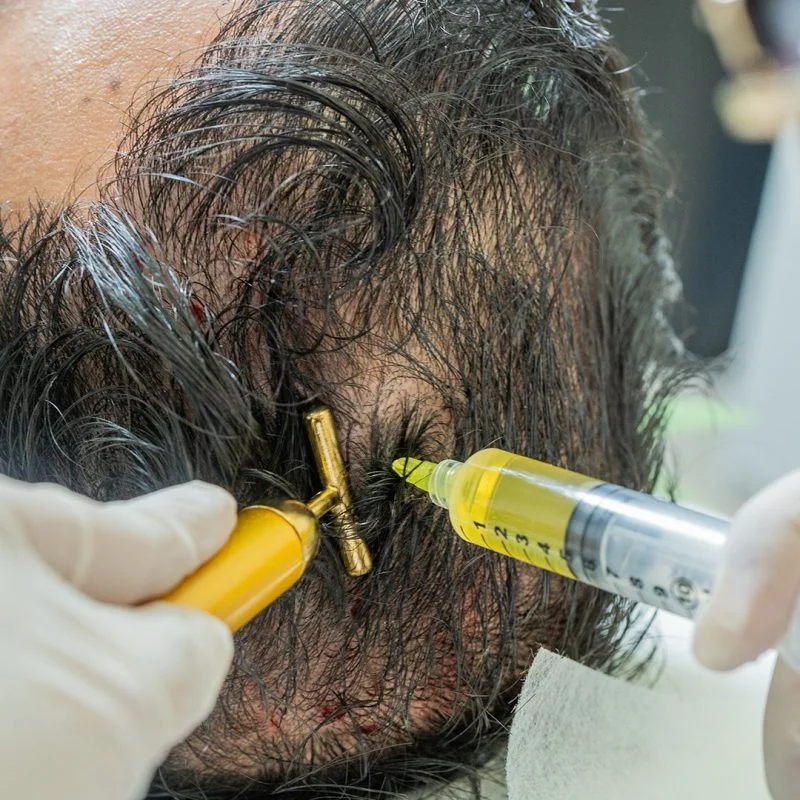 VADs, also known as vibratory anesthesia devices or vibration devices, are designed to reduce pain perception during medical procedures. The mechanism involves stimulating nerve endings with vibrations, which can interfere with the transmission of pain signals to the brain. VADs are often used as a distraction technique and may help make the injection process more tolerable for patients.
VADs, also known as vibratory anesthesia devices or vibration devices, are designed to reduce pain perception during medical procedures. The mechanism involves stimulating nerve endings with vibrations, which can interfere with the transmission of pain signals to the brain. VADs are often used as a distraction technique and may help make the injection process more tolerable for patients.
Is PRP safe?
PRP (Platelet-Rich Plasma) therapy for hair loss is generally considered safe, but like any medical procedure, it comes with some potential risks and contraindications. Here are considerations and factors that may affect eligibility for PRP treatment:
1. Medications and Supplements:
- It’s important to disclose all medications, supplements, and herbs you are taking to your healthcare provider before undergoing PRP therapy.
- Certain medications, especially blood thinners, may need to be adjusted or discontinued temporarily before the procedure.
2. Contraindications:
- Providers may advise against PRP for hair loss in individuals with certain health conditions or lifestyle factors.
- Contraindications may include heavy smoking, a history of alcohol or drug misuse, and chronic conditions such as acute or chronic infections, cancer, chronic liver disease, chronic skin disease, hemodynamic instability, hypofibrinogenemia, metabolic disorder, platelet dysfunction syndromes, systemic disorders, sepsis, low platelet count, and thyroid disease.
3. Blood Thinners:
- If you are on blood thinners, providers may recommend against PRP therapy due to the potential risk of increased bleeding and bruising.
4. Overall Health Status:
- Individuals with certain health conditions that affect their overall health status and ability to heal may be deemed unsuitable candidates for PRP therapy.
5. Specific Diagnoses:
- Certain medical diagnoses, such as acute or chronic infections, cancer, and platelet dysfunction syndromes, may exclude individuals from undergoing PRP treatment.
It’s crucial to have a thorough consultation with a qualified healthcare provider before considering PRP therapy for hair loss. During the consultation, your medical history, current health status, and any potential contraindications will be thoroughly evaluated to determine whether PRP is a suitable and safe option for you.
Remember that the decision to undergo PRP treatment should be made in consultation with a healthcare professional who can assess your individual health profile and provide personalized advice.

What Are the Side Effects of PRP Hair?
prp hair treatment dubai PRP hair treatment in Dubai. Platelet-rich plasma for hair Dubai. Dubai PRP hair rejuvenation. Dubai PRP hair restoration. Dubai’s top PRP for hair loss
PRP (Platelet-Rich Plasma) therapy for hair loss is generally considered safe, as it involves using the patient’s own blood, reducing the risk of communicable diseases. However, as with any medical procedure, there are potential side effects and risks associated with PRP therapy. Here are some considerations:
1. Common Side Effects:
- Bruising: Injection sites may develop bruising, which is a common and usually temporary side effect.
- Swelling: Some patients may experience mild swelling at the injection sites, typically resolving on its own.
2. Potential Side Effects:
- Injury to Blood Vessels or Nerves: While rare, there is a possibility of injury to blood vessels or nerves during the injection process.
- Infection: Any procedure involving injections carries a risk of infection. It’s important to ensure proper sterilization and hygiene during the procedure to minimize this risk.
- Calcification at Injection Points: In some cases, there may be calcification at the injection points, potentially affecting the surrounding tissues.
- Scar Tissue: Formation of scar tissue is a possibility, although it’s not a common side effect.
3. Individual Variability:
- The likelihood of experiencing side effects can vary from person to person, and not everyone will experience them.
PRP Hair Restoration treatment in Dubai
Preventive Measures:
- To minimize the risk of side effects, it’s essential to have the procedure performed by a qualified and experienced healthcare provider.
- Adhering to proper sterilization and hygiene protocols is crucial to prevent infections.
- Patients should provide a comprehensive medical history, including any allergies or sensitivities, to the healthcare provider before the procedure.
How Many Sessions PRP Hair Do I Need?
The recommendation to administer PRP (Platelet-Rich Plasma) injections over a series of sessions followed by maintenance treatments aligns with common practices in many medical settings. Here’s a breakdown of the suggested treatment schedule:
1. Initial Treatment Sessions:
- Typically, PRP for hair loss is administered in a series of sessions, often over three sessions.
- The sessions are spaced four to six weeks apart to allow for the potential benefits of the treatment to take effect and to optimize the chances of success.
2. Maintenance Treatments:
- After the initial series of treatments, patients are advised to have maintenance treatments.
- Maintenance treatments are usually recommended at longer intervals, ranging from every six to twelve months.
prp hair treatment dubai PRP hair treatment in Dubai. Platelet-rich plasma for hair Dubai. Dubai PRP hair rejuvenation. Dubai PRP hair restoration. Dubai’s top PRP for hair loss
PRP Hair loss treatment in Dubai
Reasoning:
- The spaced sessions and maintenance treatments aim to provide ongoing support for hair growth and health.
- Hair growth is a gradual process, and multiple sessions may be needed to achieve the desired results.
- Maintenance treatments are intended to sustain the benefits achieved during the initial sessions and to address any ongoing hair loss concerns.
Patient-Specific Plans:
- The specific treatment plan, including the number of sessions and frequency of maintenance treatments, may vary based on individual factors such as the severity of hair loss, response to treatment, and the patient’s overall health.
Consultation with Healthcare Provider:
- Patients must consult with their healthcare provider or dermatologist to determine the most suitable treatment plan for their individual needs.
- The healthcare provider can assess the response to initial treatments and make recommendations for ongoing care based on the patient’s progress.
Patients should be actively involved in discussions about their treatment plan, and open communication with the healthcare provider is essential to achieving the best outcomes. The suggested treatment schedule allows for a comprehensive and personalized approach to address individual hair loss concerns.
Who Should Not Get PRP Hair?
You would not be considered a candidate for PRP Hair treatment if you have any of the following (Contraindications):
- An impaired immune system due to immunosuppressive diseases, HIV, AIDS, or immunosuppressive medications.
- Skin conditions and diseases including: Facial cancer, existing or uncured. This includes SCC, BCC and melanoma, systemic cancer, and chemotherapy.
- Any type of blood cancer
- Low Platelet Count: PRP relies on platelets, so individuals with a low platelet count may not be suitable candidates.
- Thyroid Disease: People with unregulated thyroid disease may be advised against PRP treatment.
- Unregulated Diabetes: Individuals with unregulated diabetes may not be recommended for PRP treatment.
- Steroid therapy, dermatological diseases affecting the face such as Porphyria, blood disorders and platelet abnormalities, anticoagulation therapy such as Warfarin.
- A history of medication over the past 2 months that could affect the skin, i.e., Accutane.
- Pacemakers, a history of a severe heart disorder, arrhythmias
- Blood thinning medications or blood clotting disorders
- Any active skin disease or disorder around the treatment site; acne, eczema, psoriasis
- A history of keloids or abnormal wound healing
- Any surgical procedure in the treatment area within 3 months
- Pregnancy and breastfeeding.
Procedure details
How should I prepare for PRP Hair?
- Avoid pain relievers called “NSAIDs,” such as aspirin, ibuprofen (generic, Advil, Aleve or Motrin), voltaren and other blood thinning agents such as Vitamin E, Ginko Biloba, St. John’s Wort and fish oil or omega-3s to prevent bruising 7-10 days before the treatment. You must alert us of any medical conditions you may have and/or any prescribed medications you are taking before your treatment.
- If you are taking prescription blood thinners such as Heparin, Coumadin, Plavix or beta-blockers/Inderal (Propranolol) you should check with the prescribing doctor to see if there are no contraindications for this treatment and if you can stop these medicines for 7-10 days before your appointment and at least 2 days after the procedure has been done.
- Avoid smoking and alcoholic beverages for 24 hours before the procedure as this can increase the risk for bleeding and bruising. Smoking and drinking alcohol also impact the healing process and affect PRP treatment’s results.
- Continue other hair loss treatments such as laser treatment, minoxidil, or hormone-blocking tablets if prescribed. It is okay to color your hair up to 7 days before the procedure.
PRP Hair price Dubai
- Shower in the morning of the procedure day and wash your hair thoroughly using regular shampoo. Do not apply sprays, gels, or styling products to your hair.
- If wearing a hair system, remove it before shampooing, and do not wear it before PRP Hair treatments.
- Don’t skip breakfast. On the morning of, consume plenty of food and drink as this will decrease the chances of lightheadedness during the treatment. Make sure you eat close to your appointment.
- Sun exposure and/or usage of a tanning bed, including self-tanning products must be avoided for a minimum of 24 hours before and after the treatment, and preferably for up to 1-2 weeks to minimize the risk of post-treatment temporary dyspigmentation (darkening or lightening of the skin). Please be advised a treatment will not be administered on sunburned skin.
- Please come to your appointment with minimal or no make-up on the areas that are going to be treated. No lotions, makeup, or other topical products should be applied on the day of the procedure.
- Drink a bottle of water (500 mL) at least 2 hours before your session to make the blood draw easier.
What should I expect during PRP Hair treatment?
Step 1: Blood Collection
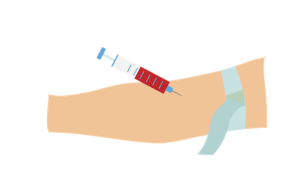 During the PRP (Platelet-Rich Plasma) facial rejuvenation procedure, a small amount of blood, typically one tube, around 10 – 15 ml is drawn usually from your arm.
During the PRP (Platelet-Rich Plasma) facial rejuvenation procedure, a small amount of blood, typically one tube, around 10 – 15 ml is drawn usually from your arm.
This procedure is the same as when you give blood for some blood tests.
Step 2: Preparation of PRP

The tube with the collected blood is placed in a medical device called a centrifuge. This device separates the blood into layers, with one of these layers containing a high concentration of platelets, growth factors, and proteins essential for promoting skin healing and rejuvenation.
It takes around 10 – 15 minutes to prepare the PRP in the centrifuge.
After spinning the blood tube in the centrifuge, plasma with highly concentrated platelets is collected from the tube with a syringe.
Step 3: Application of PRP
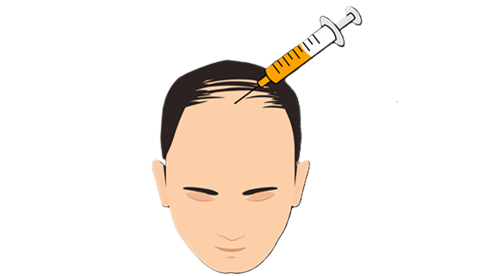
Following this preparation, the PRP solution is strategically injected into targeted areas of the scalp where increased hair growth is desired. These injections are meticulously administered to ensure even distribution across the affected regions. Over time, the growth factors present in the PRP work to stimulate dormant hair follicles, promoting hair growth and improving overall scalp health.
Before the injections, local anesthetic spray can be applied topically to the target area. Also during the injection, a vibration anesthesia device can be used. This is done to ensure the comfort of the procedure and help minimize any potential discomfort associated with the injection. This is a common practice to enhance the overall patient experience and make the treatment as comfortable as possible.
What should I know about PRP Hair aftercare?
- Expect some redness, small pin prick marks, Pinpoint bleeding, and minor bruising in the injection site. A tingling sensation may be noticed while the cells are being activated. You may have a bruise at the blood draw site. Tylenol or other Acetaminophen-containing products can be taken as directed for pain or discomfort.
- No touching, rubbing, scratching, peeling, picking, physical pressure, or massaging of the treated area for 6 hours after treatment. For 72 hours, do not scrub, exfoliate, or aggressively massage the treated area.
- For at least 6-8 hours do not wash your hair. After 6-8 hours of treatment, you can wash your hair gently. Use pH-balanced shampoo for the first 3 days. Do not use any hair products for at least 6-8 hours after the treatment.
- Avoid smoking, alcohol, pain relievers called “NSAIDs,” (ibuprofen, aspirin, naproxen etc.) and caffeine for 3 days (if possible, try for 7 days). You may take paracetamol (acetaminophen) (Tylenol, or Panadol, etc.) for pain as it does not affect inflammation and skin repair mechanisms. Continue increased water intake the first week after your treatment.
Best PRP Hair in Dubai
- Avoid resuming Minoxidil (Formula 82M, Rogaine®), hair coloring, and straightening for 3 days.
- Use a clean pillow case for 3 nights following your procedure.
- Avoid exposing the treated area/s to direct high heat, or engage in activities that will get you wet or cause you to sweat (e.g., blow dryer, sun exposure, swimming pool, sauna, steam room, Jacuzzi, very hot shower, strenuous exercise, etc.) for 3 days.
- Do not use blood thinning agents such as vitamin E, vitamin A, Ginko, Garlic, Flax, Cod Liver Oil, Essential Fatty Acids and at least one week after your treatment.
- Eat a healthy diet that is rich in vitamins and minerals (like iron, zinc, vitamin B12, and biotin) and continue increased water intake.
When To Contact Your Doctor:
- Drainage.
- Increased warmth at or around the treated area.
- Fever of 38.5 C (101 F) or greater.
- Severe pain that is unresponsive to over-the-counter pain relievers.

How Long Does PRP Hair Injections Take to See Results?
PRP (Platelet-Rich Plasma) injections for hair loss can provide patients with noticeable results in addressing hair loss concerns.
Timeline for Results:
- Patients may start to see results from PRP therapy in as early as 4 to 6 weeks.
- The improvement in hair texture, thickness, and overall scalp health can continue to progress in the following months.
Long-Lasting Results:
- PRP injections can provide long-lasting results for some individuals.
- The duration of the results may vary among patients, and factors such as the extent of hair loss, individual response to treatment, and adherence to post-treatment care can influence the longevity of the results.
Not a Permanent Solution:
- While PRP can be effective in addressing certain hair loss concerns, it is not considered a permanent solution.
- PRP therapy typically requires maintenance treatments to sustain and enhance the results over time.
Individual Response:
- The effectiveness of PRP can vary from person to person.
- Some individuals may experience significant improvement with a few sessions, while others may require more treatments to achieve their desired results.
Addressing the Underlying Cause:
- Identifying and addressing the underlying cause of hair loss, such as hormonal imbalances or nutritional deficiencies, is essential for comprehensive treatment.
How Long Does PRP for Hair Last?
The duration of results from PRP (Platelet-Rich Plasma) therapy for hair loss can vary among individuals. PRP is often considered a long-lasting solution for certain types of hair loss, but it’s important to understand that it may not provide permanent results on its own. Here are some factors that can influence how long the effects of PRP for hair loss may last:
Hair loss treatment
Individual Response: The effectiveness of PRP can vary from person to person. Factors such as the severity of hair loss, the underlying cause, and individual response to treatment play a role.
Maintenance Treatments: PRP therapy is typically not a one-time procedure. To maintain and enhance results, individuals may need periodic maintenance treatments. The frequency of these treatments can vary, and some people may require more frequent sessions than others.
Underlying Causes: Addressing the underlying causes of hair loss is crucial for sustained results. If hormonal imbalances, nutritional deficiencies, or other factors contributing to hair loss are not addressed, it may impact the longevity of PRP results.
Combined Approaches: PRP is often used in conjunction with other hair restoration treatments. Combining PRP with topical medications, laser therapy, or oral medications may provide a more comprehensive and longer-lasting approach to hair restoration.
Lifestyle Factors: Lifestyle factors, such as diet, stress levels, and overall health, can influence the longevity of PRP results. Adopting a healthy lifestyle may contribute to better overall hair health.
Post-Treatment Care: Adhering to post-treatment care instructions provided by the healthcare provider is important. Following guidelines on activities to avoid, hair care routines, and other recommendations can contribute to the success and longevity of PRP results.
prp hair before and after
It’s essential for individuals considering PRP for hair loss to have realistic expectations and engage in open communication with their healthcare provider. During the initial consultation, the healthcare provider can assess the individual’s specific condition, discuss treatment goals, and provide insights into the expected duration of results.
In summary, while PRP can offer long-lasting results for some individuals, it often requires ongoing maintenance treatments to sustain the benefits over time. The longevity of PRP results is influenced by various factors, and individual responses may vary. Regular follow-up consultations with a healthcare provider can help tailor the treatment plan to meet specific needs.
What are the Alternative Treatments or Combination Therapies of PRP Hair?
There are several alternative treatments and combination therapies that individuals may consider for addressing hair loss, either instead of or in combination with PRP (Platelet-Rich Plasma) therapy. It’s important to note that the effectiveness of these alternatives can vary among individuals, and consulting with a healthcare professional is crucial to determine the most suitable approach. Here are some alternatives and combination therapies for hair loss:
PRP Hair Restoration treatment in Dubai
Minoxidil (Rogaine): Minoxidil is an over-the-counter topical medication that is applied to the scalp. It is one of the most widely used treatments for promoting hair growth.
Finasteride (Propecia): Finasteride is an oral prescription medication that is primarily used to treat male-pattern baldness. It works by reducing the production of dihydrotestosterone (DHT), a hormone linked to hair loss.
Low-Level Laser Therapy (LLLT): LLLT devices, such as laser caps or helmets, use low-level lasers or light-emitting diodes (LEDs) to stimulate hair follicles and promote hair growth.
Topical Corticosteroids: Prescription-strength corticosteroid creams or solutions may be recommended by dermatologists to reduce inflammation and promote hair growth in certain types of hair loss conditions.
Hair Growth Shampoos and Topicals: Some shampoos, conditioners, and topical products contain ingredients like ketoconazole, caffeine, or other active compounds believed to support hair growth.
Nutritional Supplements: Supplements containing vitamins, minerals, and other nutrients, such as biotin, iron, zinc, and omega-3 fatty acids, are often marketed for supporting hair health.
Hair Transplantation: Surgical procedures like hair transplantation involve moving hair follicles from one area of the scalp to another. It is considered a more permanent solution for certain types of hair loss.
Mesotherapy: This involves injecting a mixture of vitamins, minerals, and other active ingredients directly into the scalp to stimulate hair growth.
Combination Therapies: Some individuals opt for combination therapies, combining PRP with other treatments like minoxidil, finasteride, or low-level laser therapy for potentially enhanced results.
Hormone Therapy: Hormone therapy may be considered in cases where hormonal imbalances contribute to hair loss. This is typically recommended and monitored by healthcare professionals.
PRP Hair Restoration treatment price in Dubai
It’s crucial to consult with a qualified dermatologist or healthcare provider to assess the underlying causes of hair loss and determine the most appropriate treatment plan. The choice of treatment may depend on factors such as the type and extent of hair loss, individual health, and personal preferences. Additionally, addressing lifestyle factors, such as stress management and a balanced diet, can contribute to overall hair health.
Does my health insurance cover PRP Hair?
When PRP Hair treatments are utilized for cosmetic purposes, it is typically not covered by insurance. For coverage information, it is advisable to consult with your health insurance provider to understand the specific details regarding coverage and potential reimbursement.
Frequently Asked Questions about PRP:
Transform Your Reflection: Unleash Your Natural Beauty with Dermal Fillers.
Your Skin, Decoded: Experience the Power of Digital Analysis for Personalized Skincare.
aesthetic aesthetics alopecia androgenic alopecia Dubai Finasteride growth factors hair fall hair follicles hair growth hair loss hair regrowth hair thickening hair thinning hair treatment Minoxidil plasma platelet Platelet Rich Plasma Propecia PRP PRP for hair loss PRP Hair Restoration Rogaine scalp


